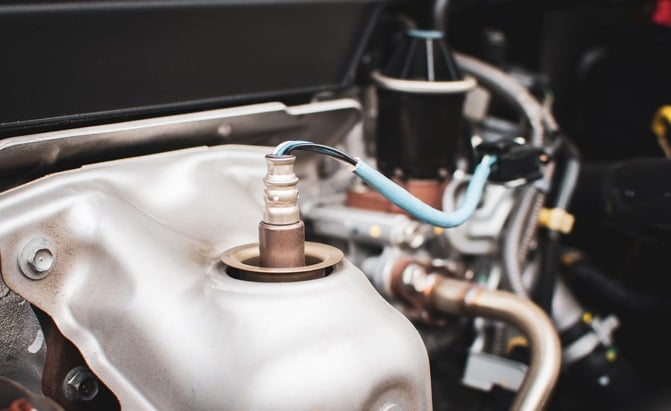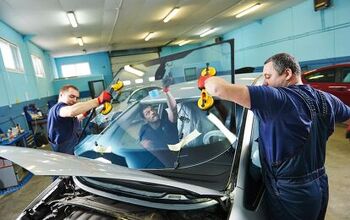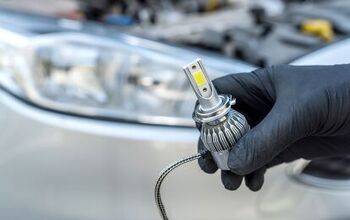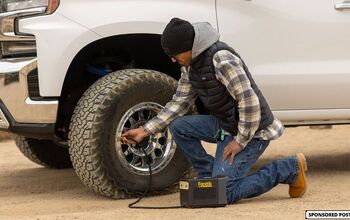The Best O2 Sensors to Keep Your Engine Running Smoothly
O2 sensors are critical to emissions control on your car, SUV or truck. As the name implies, the O2 sensor (also called an “oxygen sensor” or “lambda sensor”) detects the level of oxygen in your engine’s exhaust flow. This level is reported to the ECU, which uses the data to adjust the engine’s fuel-to-air mixture to keep the exhaust oxygen levels at permissible levels. It’s a dynamic process, with constant monitoring and response. All late model cars have at least one and up to four oxygen sensors, depending on engine type, configuration, and layout.
While an O2 sensor is a pretty simple device about the size of a spark plug, it can wear out during normal use. When it fails, the engine’s computer can only guess at the best fuel-to-air ratio, and the engine will likely run poorly, causing cascading issues like fouled spark plugs, backfiring and other undesirable complications. Thankfully, an O2 sensor is relatively affordable (think $35 – $75), and in many cases can be replaced by a properly equipped home mechanic. If you need an O2 sensor, it makes sense to buy the best one you can find. To help, we’ve assembled this list of the best O2 sensors to keep your engine running smoothly.
For more information on oxygen sensors, refer to our table of contents.
Table of contents
- 1. Denso Oxygen Sensor
- 2. Bosch Premium Oxygen Sensor
- 3. NTK OE Type Oxygen Sensor
- 4. Motorcraft O2 Sensor
- 5. ACDelco Heated Oxygen Sensor
- How will I know if I need to replace my O2 sensor?
- Can I drive my car without O2 sensors?
- Are all O2 sensors the same?
- How long should my O2 sensors last?
- Do I have to replace all of my O2 sensors at once?
1. Denso Oxygen Sensor
Nothing is more frustrating and time-consuming than buying a replacement auto part only to find that it doesn’t fit properly. That’s why Denso’s “First Time Fit” parts are so great – they’re precision engineered and manufactured to OE specs to ensure a perfect fit every time.
Denso Oxygen Sensors use corrosion-resistant stainless-steel construction that is robot-welded for precision. A porous PTFE filter blocks efficiency-robbing contaminants, allowing atmospheric oxygen to enter the sensor without permitting water or engine contaminants to seep into the casing, and a refined zirconia element improves sensor response. A double protection cover maintains proper temperature for quicker response times and protects the ceramic element against silicone and lead poisoning, while an aluminum-oxide trap layer keeps silicone and lead outside the ceramic element through Denso's exclusive design, preventing damage to the platinum electrode.
Pros | Robot laser welded, promises a First Time Fit, one-year replacement warranty |
Cons | Not available for all makes and models |
2. Bosch Premium Oxygen Sensor
Bosch invented the oxygen sensor and began producing it in 1976, so in other words, when it comes to O2 sensors, they’ve got more experience than any other manufacturer. (To date, Bosch has produced over one billion oxygen sensors.) Many automakers use Bosch Oxygen Sensors as original equipment, making them direct replacement parts. As a result, Bosch Premium Oxygen Sensors are thimble- and planar-switching sensors that are designed to meet or exceed OE specifications.
These sensors feature double laser-welded stainless-steel bodies to protect against contamination. The threads of the sensor are pre-coated with anti-seize compound right out of the box for easy installation. True direct-fit OE connectors and harness make connection a snap (literally). Bosch Premium Oxygen Sensors are warrantied for 12 months/unlimited miles when used in non-commercial passenger cars and light trucks.
Pros | Proven expertise from the inventor of the oxygen sensor, 12-month/unlimited-mile warranty |
Cons | Premium brand can command premium prices |
3. NTK OE Type Oxygen Sensor
While Bosch may rightfully boast of having invented the oxygen sensor, NTK is the world’s largest supplier and manufacturer of original equipment oxygen sensors. NTK Oxygen Sensors are extensively tested during manufacturing to guarantee quality and reliability. Each sensor is supplied with a factory-fitted OE connector for easy installation, and is precision-manufactured with a sensing element incorporating premier technical ceramics.
The NTK sensor optimizes emissions and fuel economy, using a heated sensor at its heart. An oxygen sensor must be hot (about 600 degrees or higher) before it will start to generate a voltage signal that it sends to the ECU, so many oxygen sensors have a small heating element inside to help them reach operating temperature more quickly. The heating element can also prevent the sensor from cooling off too much during prolonged idle.
Pros | Heated sensor element for cars that require this feature, one-year warranty |
Cons | Not appropriate for all makes/models |
4. Motorcraft O2 Sensor
If you’ve got a Ford, Mercury, or Lincoln car, SUV, van, or truck, then you’ve got Motorcraft parts. Motorcraft is the official replacement brand for Ford, which can give you confidence when installing a Motorcraft O2 Sensor. Units come ready to "plug and play” with no need for modifications. They use OE connectors and wire lengths, with tight tolerance ranges to help minimize repeat repairs and false "Check Engine" warnings. They are also designed to help provide optimal performance and fuel economy.
Conveniently, OE enhancements are included in the most current designs. So, if Ford upgrades the O2 sensors in your model after you’ve owned it for a while, when you buy a replacement O2 sensor, you’ll get the upgraded version, and all of the benefits of the latest innovation and engineering.
Pros | Warranty is for 2 years with unlimited mileage and includes labor, OEM fitment for Ford vehicles |
Cons | Ford only |
5. ACDelco Heated Oxygen Sensor
Got a GM vehicle? An ACDelco Heated Oxygen Sensor is a General Motors-recommended replacement for your vehicle’s original component and is a feedback sensor on your vehicle’s exhaust system. This sensor measures the proportion of oxygen in the exhaust gases. Using this measurement, the engine management computer can adjust the air/fuel ratio near the optimum value of 14.7:1. At this ratio, engine performance, emissions and fuel economy are all optimized.
Heated oxygen sensors pre-heat and maintain the ceramic element in the O2 sensor so that it can detect gases quickly, and keeps the element heated during prolonged idling to keep it doing its job even when the car cools off. And since this Oxygen Sensor has been manufactured to fit your specific GM vehicle, it provides OE-approved performance, durability and service life. Although it probably goes without saying that if you don’t own a car made by GM, you’ll want to opt for another sensor on this list…
Pros | Two-year/unlimited-mile warranty, OE fit and engineering for GM vehicles |
Cons | General Motors engines and vehicles only |
How will I know if I need to replace my O2 sensor?
In all likelihood, your car will tell you when you need to replace your O2 sensor by throwing a check engine light. Even before the light comes on, though, you’ll probably notice that you’re getting lower gas mileage, and that your engine is idling roughly. Your car may be hard to start, and when it does start, there’s a sulfurous, rotten-egg smell coming from your exhaust.
Can I drive my car without O2 sensors?
Bosch invented the O2 sensor and began producing it in 1976, and it has since become a standard part of the emissions control system on cars in the US. If your car was equipped from the factory with O2 sensors, you probably need working sensors for the engine to work properly (and to conform to emissions standards). Older cars with carburetors and without ECUs may be exceptions; almost all cars with fuel injection need O2 sensors, however.
Are all O2 sensors the same?
O2 sensors must be matched to the make, model, configuration, and year of your vehicle. Each manufacturer establishes specifications for the O2 sensors that fit their cars and engines, and those parts are often made by third-party companies. Replacement parts may be identical to the originals, or they may be engineered and made by companies completely unrelated to the original car maker. Look for a reputable brand name and a good warranty, and avoid no-name parts with prices that are too good to be believed.
How long should my O2 sensors last?
You should be able to expect 100,000 miles of service from your O2 sensors in most cases. Of course, a lot depends on how you use and maintain your vehicle. The O2 sensor is in the exhaust flow, so it is affected by contaminants in that environment. Bad fuel, a poorly tuned engine, or excessive heat can shorten the life of O2 sensors (among other engine components). Time can also play a part in the failure of O2 sensors, as corrosion and natural wear also play a part in long-term health.
Do I have to replace all of my O2 sensors at once?
No, you only have to replace failed sensors. It’s smart to test all of your O2 sensors when you detect a failure in one. O2 sensors can be tested while installed on a car, or they can be removed and tested. Some owners decide once they’ve removed the O2 sensors to test them that it makes sense to replace them with new parts at that time, avoiding the potential inconvenience of sequential failure due to aging parts. Your time and budget for repairs will help make the decision.
We are committed to finding, researching, and recommending the best products. We earn commissions from purchases you make using the retail links in our product reviews. Learn more about how this works.
Main photo credit: BLKstudio / Shutterstock.com
More by Jason Fogelson







































Comments
Join the conversation
I would like to know if you do have Oxygen Sensors for sale, If YES kindly let me know the major credit cards you accept as form of Payment. I will await your immediate response. Best Regards
Excellent info I have a Dodge Grand Caravan 08 4.0 motor which name /brand should I buy